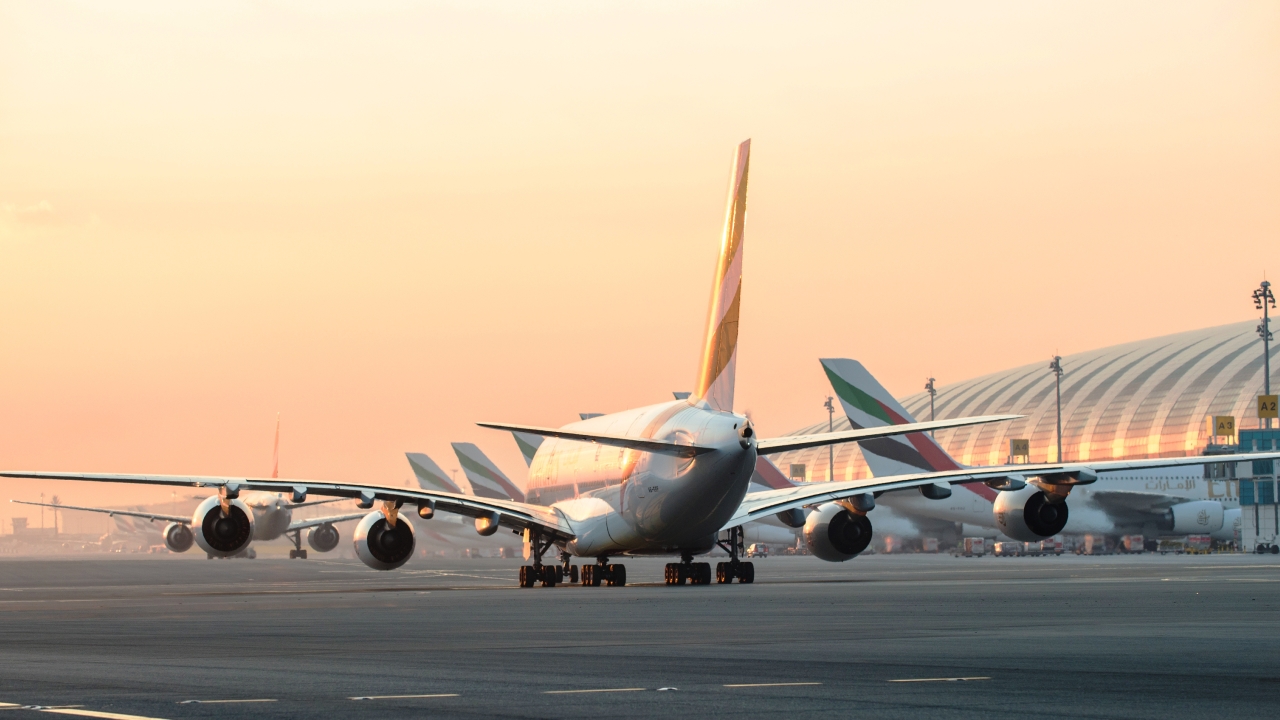Sharjah ramps up emission control
Sharjah International Airport (SIA) is taking a lead in the Middle East with steps to control air pollution on the ramp in a pilot study with ‘green’ mobile ground power units (GPUs). Chuck Grieve reports.

The emissions from engines of all kinds operated at airports are harming the environment and affecting workers’ health.
A 2012 study by Copenhagen Airport shows that air pollution on the ramp, on average, is double that of rush-hour traffic in the city centre.
Of the many sources of this pollution, the biggest are diesel-powered ground power units (GPUs), which emit nine times the harmful ultrafine particles found in the air on the busy street.
Airport operators recognise their responsibility to reduce the emissions under their control. Many, including SIA, are members of the airport carbon accreditation (ACA) programme, a carbon management certification standard.
SIA has already achieved ACA level 3 (optimisation) and, in line with its commitment to carbon neutrality, it has conducted a three-month trial of an innovative ‘green’ mobile GPU from manufacturer ITW GSE that uses cutting-edge battery technology.
ITW GSE says it’s a “game-changer” in the ongoing drive to lower the environmental impact of airports.
Ivana Meyer, head of airside operation for Sharjah Aviation Services, said the performance of ITW GSE’s electric GPU (e-GPU) during the three-month trial was satisfactory. Users found it “easy to operate and environmentally friendly due to noticeably reduced noise and carbon pollution”.
It has been developed by ITW GSE in collaboration with the Schiphol Group and Nissan. Launched in 2017, it combines ITW GSE engineering with Nissan battery technology – it uses batteries supplied as standard on Nissan’s LEAF electric car.
Described as a world-first, the e-GPU is already in operation at several airports including Schiphol, Eindhoven and Rotterdam The Hague in the Netherlands, and Brisbane in Australia. It is on trial at others including Zurich, Madrid and Barcelona. It’s also being used by United Airlines in the USA.
David Feuga, ITW GSE’s Middle East and Africa sales director, said the unit is configured with four batteries that produce power at 400Hz, the frequency used in most commercial aircraft, and 28VDC. It can operate up to 14 hours without charging, he added. “Realistically, the unit can accommodate six to 15 turnarounds, depending on the aircraft.”
Airports recognise the drawbacks to using diesel-powered GPUs but, until now, have been restricted in choice for aircraft parked away from bays equipped with fixed electrical power sources. The new electrical mobile unit gives them the opportunity to reduce their carbon footprint and the health risks to employees.
ITW GSE says the key features of its 7400 e-GPU include zero noise, built-in redundancy against battery pack failure, a reduction in CO2 by 90% and NOx emissions by 95%. It also has the ability to be recharged from any 50/60Hz socket.
The Middle East is catching up with Europe and North America in tackling sources of pollution, Feuga said, noting that many airports in the MENA region are now putting in place sustainable, environmentally friendly programmes.
However, he added: “While diesel remains cheap, it will be difficult to convince people to invest in equipment that is more expensive.”
National initiatives such as the UAE vision 2021, Abu Dhabi’s economic vision 2030 and Dubai’s clean energy strategy 2050 are expected to help change this mindset.
Feuga said airport authorities throughout the Gulf and Turkey are interested in the clean GPU technology. For many, it’s “important to show the world that they’re prepared to go green”.
He said it is too early to forecast how many units ITW GSE could sell into the region, or the wider impact that the SIA trial will have. Dnata, which operates globally, could be watching closely.
While the initial cost may be greater, the operating costs of the e-GPU are lower because it needs no maintenance, unlike a diesel unit. The only moving parts are its four wheels.
In the US, where airlines typically own their own equipment, United Airlines has trumpeted its adoption of e-GPUs as part of its effort to reduce its carbon footprint. The marketing potential of going ‘green’ has not been lost on United – and ITW GSE isn’t complaining about the exposure.
“Airlines and airports are investing a lot in ramp equipment,” said Feuga. “New pushback tractors are electrical. The only system that runs the whole time an aircraft is on the apron is the GPU. Even the shortest turnaround can be 40 minutes. We think the e-GPU has huge potential.”
Stay up to date
Subscribe to the free Times Aerospace newsletter and receive the latest content every week. We'll never share your email address.

